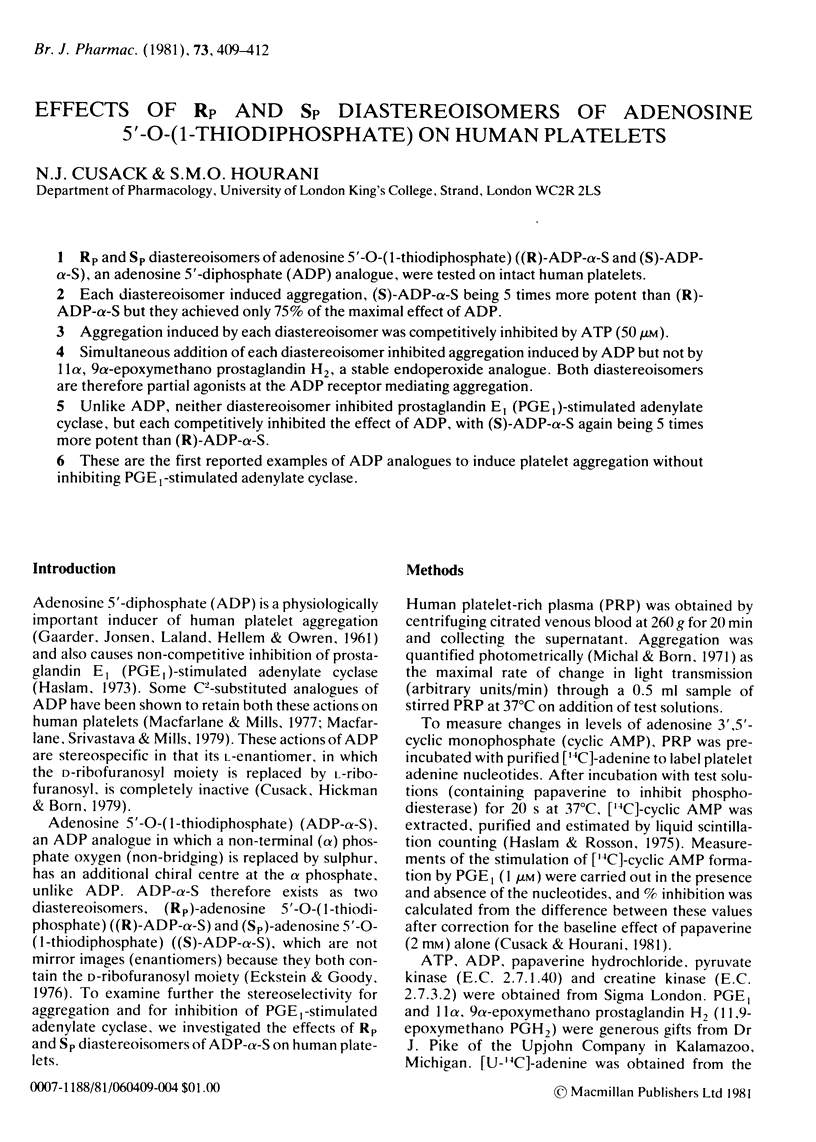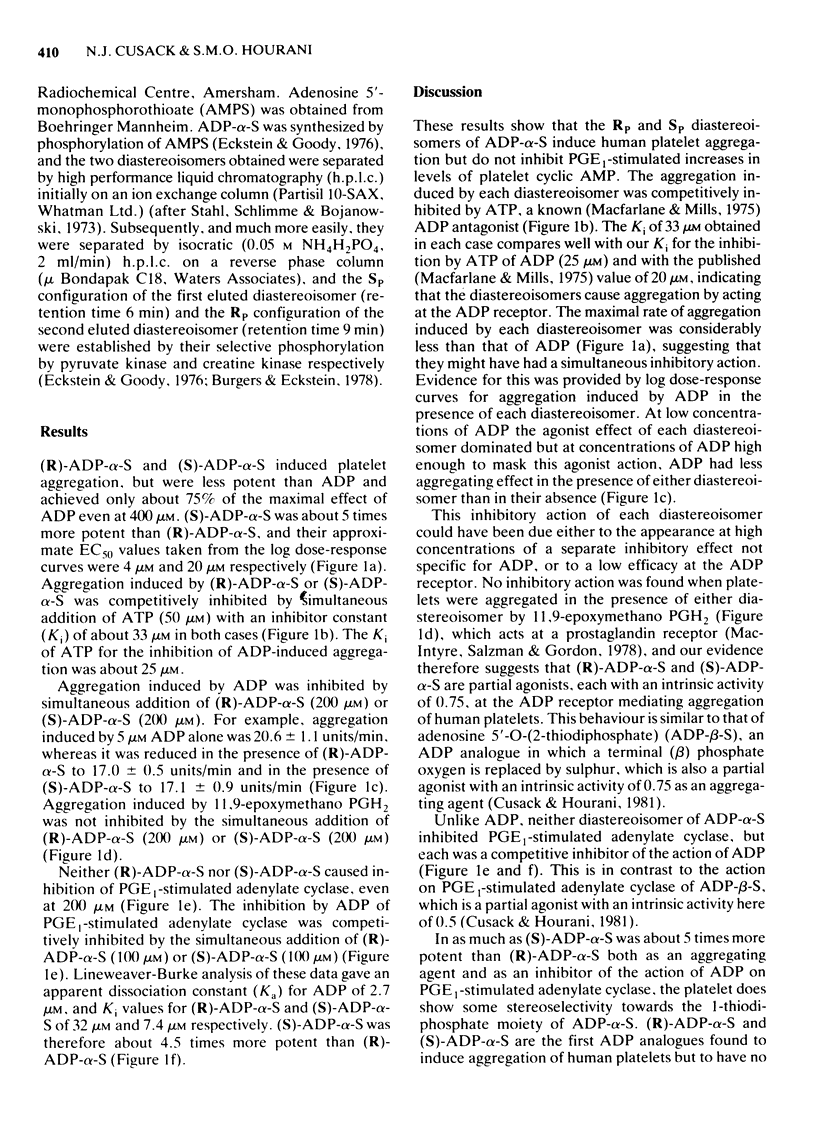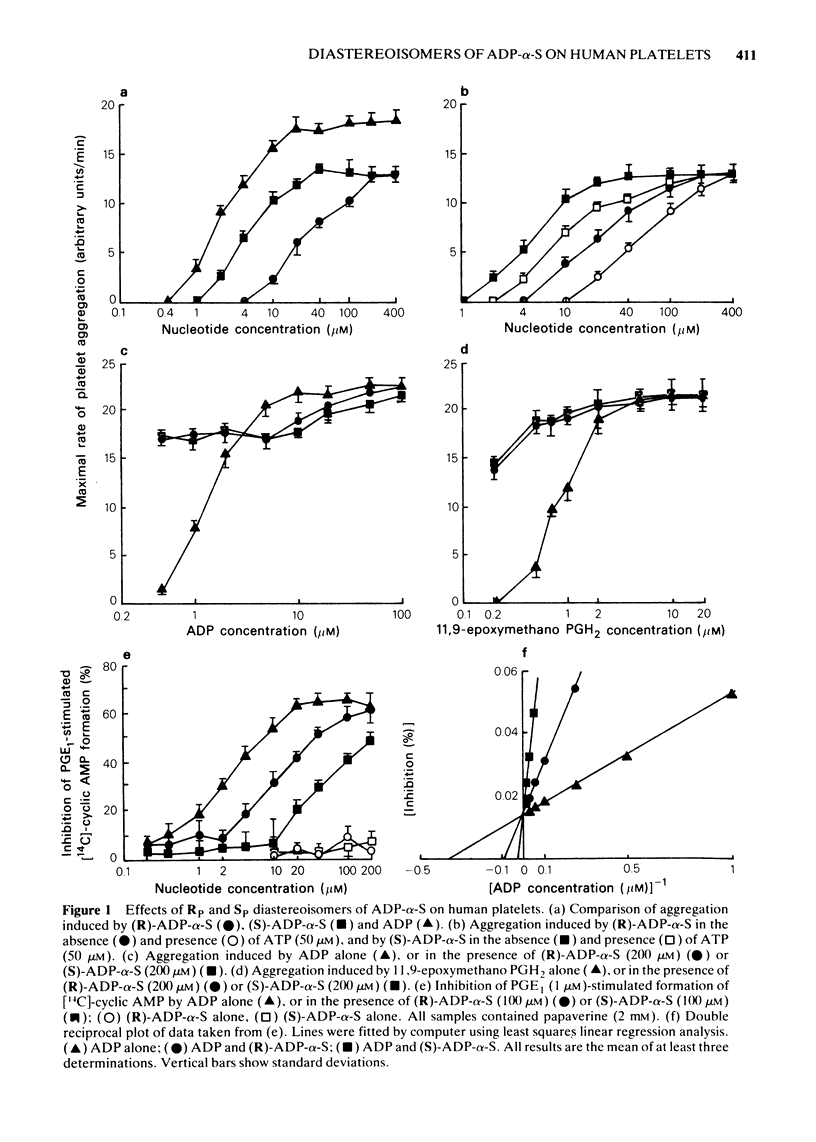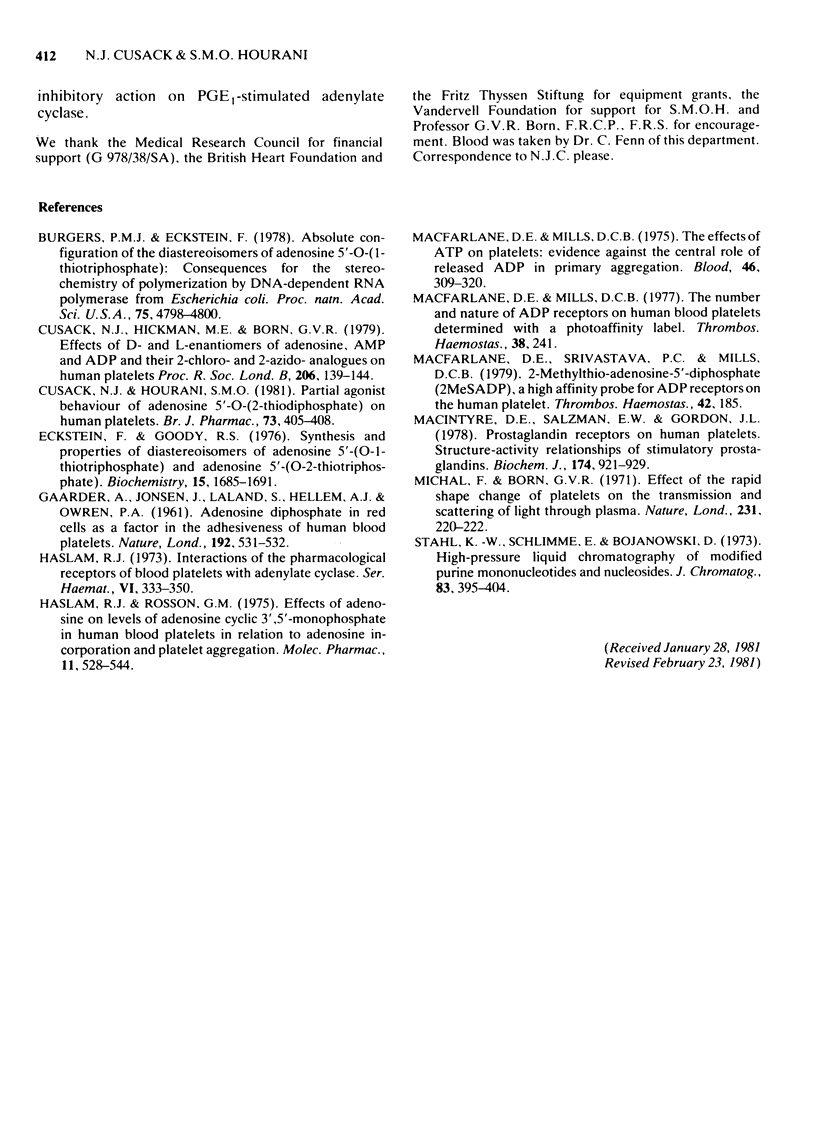Abstract
1 RP and SP diastereoisomers of adenosine 5'-O-(1-thiodiphosphate) ((R)-ADP-alpha-S and (S)-ADP-alpha-S), an adenosine 5'-diphosphate (ADP) analogue, were tested on intact human platelets. 2 Each diastereoisomer induced aggregation, (S)-ADP-alpha-S being 5 times more potent than (R)-ADP-alpha-S but they achieved only 75% of the maximal effect of ADP. 3 Aggregation induced by each diastereoisomer was competitively inhibited by ATP (50 microM). 4 Simultaneous addition of each diastereoisomer inhibited aggregation induced by ADP but not by 11 alpha, 9 alpha-epoxymethano prostaglandin H2, a stable endoperoxide analogue. Both diastereoisomers are therefore partial agonists at the ADP receptor mediating aggregation. 5 Unlike ADP, neither diastereoisomer inhibited prostaglandin E1 (PGE1)-stimulated adenylate cyclase, but each competitively inhibited the effect of aDP, with (S)-ADP-alpha-S again being 5 times more potent than (R)-ADP-alpha-S. 6 These are the first reported examples of ADP analogues to induce platelet aggregation without inhibiting PGE1-stimulated adenylate cyclase.
Full text
PDF



Selected References
These references are in PubMed. This may not be the complete list of references from this article.
- Burgers P. M., Eckstein F. Absolute configuration of the diastereomers of adenosine 5'-O-(1-thiotriphosphate): consequences for the stereochemistry of polymerization by DNA-dependent RNA polymerase from Escherichia coli. Proc Natl Acad Sci U S A. 1978 Oct;75(10):4798–4800. doi: 10.1073/pnas.75.10.4798. [DOI] [PMC free article] [PubMed] [Google Scholar]
- Cusack N. J., Hickman M. E., Born G. V. Effects of D- and L- enantiomers of adenosine, AMP and ADP and their 2-chloro- and 2-azido- analogues on human platelets. Proc R Soc Lond B Biol Sci. 1979 Nov 30;206(1163):139–144. doi: 10.1098/rspb.1979.0097. [DOI] [PubMed] [Google Scholar]
- Cusack N. J., Hourani S. M. Partial agonist behaviour of adenosine 5'-O-(2-thiodiphosphate) on human platelets. Br J Pharmacol. 1981 Jun;73(2):405–408. doi: 10.1111/j.1476-5381.1981.tb10436.x. [DOI] [PMC free article] [PubMed] [Google Scholar]
- Eckstein F., Goody R. S. Synthesis and properties of diastereoisomers of adenosine 5'-(O-1-thiotriphosphate) and adenosine 5'-(O-2-thiotriphosphate). Biochemistry. 1976 Apr 20;15(8):1685–1691. doi: 10.1021/bi00653a015. [DOI] [PubMed] [Google Scholar]
- GAARDER A., JONSEN J., LALAND S., HELLEM A., OWREN P. A. Adenosine diphosphate in red cells as a factor in the adhesiveness of human blood platelets. Nature. 1961 Nov 11;192:531–532. doi: 10.1038/192531a0. [DOI] [PubMed] [Google Scholar]
- Haslam R. J. Interactions of the pharmacological receptors of blood platelets with adenylate cyclase. Ser Haematol. 1973;6(3):333–350. [PubMed] [Google Scholar]
- Haslam R. J., Rosson G. M. Effects of adenosine on levels of adenosine cyclic 3',5'-monophosphate in human blood platelets in relation to adenosine incorporation and platelet aggregation. Mol Pharmacol. 1975 Sep;11(5):528–544. [PubMed] [Google Scholar]
- MacIntyre D. E., Salzman E. W., Gordon J. L. Prostaglandin receptors on human platelets. Structure-activity relationships of stimulatory prostaglandins. Biochem J. 1978 Sep 15;174(3):921–929. doi: 10.1042/bj1740921. [DOI] [PMC free article] [PubMed] [Google Scholar]
- Macfarlane D. E., Mills D. C. The effects of ATP on platelets: evidence against the central role of released ADP in primary aggregation. Blood. 1975 Sep;46(3):309–320. [PubMed] [Google Scholar]
- Michal F., Born G. V. Effect of the rapid shape change of platelets on the transmission and scattering of light through plasma. Nat New Biol. 1971 Jun 16;231(24):220–222. doi: 10.1038/newbio231220a0. [DOI] [PubMed] [Google Scholar]
- Stahl K. W., Schlimme E., Bojanowski D. High-pressure liquid chromatography of modified purine mononucleotides and nucleosides. J Chromatogr. 1973 Aug 29;83:395–404. doi: 10.1016/s0021-9673(00)97056-0. [DOI] [PubMed] [Google Scholar]


